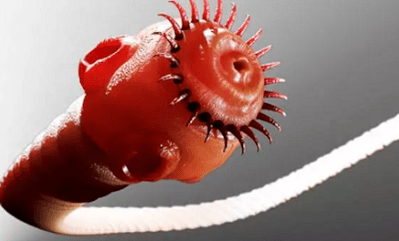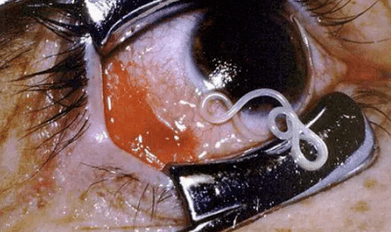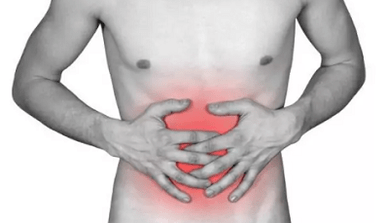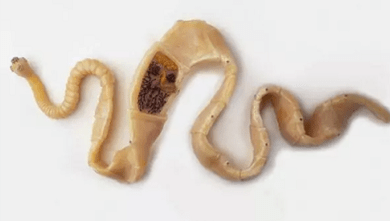At least once in his life, every modern human person faced the problem of parasites in the body.In the literal feel, the amount and range of parasites that cannot live without us are simply great.In the human body, the parasites use it as a source of food and living unless it exhausted it, but without giving its existence.
Parasites are microscopic sizes or the length can grow up to several meters, but in this case, the vital activities in the body cannot always be felt.As a rule, a person does not feel them, and he does not know about the presence of him.Meanwhile, for years and even decades, live in a human body, and even decades of decades.
The parasites in the human body pose a serious threat and pose a great threat to human health, because the work of internal organs and systems causes failure and interferes with the full assimilation of the immune system.In some cases, the situation is so serious that it can even cause death.
Types of relationships between organisms
There are several types of relationships between organisms that affect each other in nature.
The impact of some kind of one can be both neutral and positive and negative.
In addition, there are different combinations of such relations.DIFFERENT:
- Symbiosis;
- neutralism;
- Antibioz.
Symbiosis is a form of relations between both the two benefits.
Neutralism is a biological connection, which consists of living two organs in an area, but also does not affect each other.
Antibiism is a antagonistic type of a kind of biological connection that restricts the capabilities of one type of population, which is a negative impact.One of the most types of most negative antiqueism is parasitism.
Parasitism and parasites

Parasitism is antibiotics that use the body of other types of representatives as a temporary or permanent environment and nutrient.
Biological organisms living in the expense of another organism are called parasites.
The parasites do not kill the owners, but for a long time they use it as a source of food and living.
Parasites include:
- parasitic worms;
- pathogenic bacteria;
- protozoa;
- mushrooms;
- Viruses.
Homeowners may be organisms:
- bacteria;
- protozoa;
- plants;
- Animals;
- Man.
In the development process, parasites pass several stages of eggs and larvae (sexual adult, invasive), which needs to change the clusters and 2-3 owners.
Classification of parasites
All parasites are in the garden and optional.
The parasites outside the homeowner's body are either dying or in motionless condition.For example: viruses.They are only a parasitic lifestyle, that is, they completely depend on the owner and activate their activities.
Optional parasites hold a parasitic lifestyle, but if necessary, it may be in a completely normal form in the external environment.For example: pathogenic fungi and bacteria.
Share with the nature of the relationship with the host:
- True parasites;
- fake parasites;
- Super parasites.
True parasites are the same bond parasites with the only form of living a parasitic lifestyle.However, there are parasites that may be either parcel (permanent) and optional (temporary).For example: bit, fleas, intestinal helminths.
Fake parasites - Voluntarily live organisms can live and damage in a while, if accidentally entered the body.For example: The larvae of a room flies in the bowels of a person.
Super parasites are parasites living in other parasites.For example: bacteria and viruses in other parasitic insects living in other organisms.

Depending on the period of interaction with the homeholder body, they distinguish:
- Permanent parasites;
- temporary parasites.
Permanent parasites are the organisms leading all life cycles - by the owner under the larvae.For example: Ascarides, tapeworms, Lice.
Temporary parasites;Live and eat at the owner of the owner in a certain stage of development.For example: larvae of a volt-false and an imago (mature insects) - fleas and mosquitoes.
Parasites are divided into the following where the host body is located:
- Ectoparasites;
- Endoparasites.
Ectoparazites are organisms living in the skin of the host.For example: bit, fleas, ticks.
The endoparasites are organisms inside the host body.Endoparasites are divided:
- domestic parasites;
- Tissue parasites;
- intracarded.
Intrafture Parasites are organisms in the gaps that connect to the foreign environment, such as the organisms entitled in the ASCARIS, Vlasov-human intestines.
Piece parasites - For example, the type of organisms located in closed gaps and tissues, for example, for example, liver pigs, cysts of ribbon worms.
Intracelians parasites are localized in the cells of the body - for example, for example, malaria Plazmodia, toxoplasm.
Parasites in terms of distribution in the environment:
- Curl is found everywhere;
- Only a warm, tropical tropical in the tropical climate.
According to biological and epidemiological properties, the parasites are divided into:
- Geogelminters- These are the parasites in the human body, then in the field of development within the external environment (such as place);
- Biogelminters- Parasites, not only in the human body, but also in the organisms of other creatures.A person, as a rule, is the last owner and sometimes intermediate.
- Contact HelminthsThey are already in terms of mature or half, the host is different from the body, resulting in another person (autoinasia, re-structure) infection or infection.
How parasites fall into the human body
There are many affordable factors contributing to the entry of the parasites into the human body:

- dirty hands;
- animal hairs;
- Weakly-baked products (alimentary factor);
- Contact-household factor;
- inhabitant;
- percutant.
Dirty hands are the main source of infection with parasitosis.There are a number of diseases called "Diseases of Dirty Hands".The larvae of Ardms are initially causing the characteristic symptoms of the gastrointestinal tract in the skin of the hands and then.The transmission of this infection is called fecal-oral.Thus, HelminThiasis, the helminths fall on our body.For example, Ascaride Eggs spread to the human body, poorly washed vegetables, fruits, fruits, berries, greens and flies.
Animals and their wool are a source of ascaride and lifyli with worms.For example, it is a while, which has fallen from woolen, vitality (up to 6 months) and falls into carpets, items, bedding, children's toys and their hands and their hands.
It is also possible to spread the parasite eggs in a distance of 3 to 5 meters through wet breathing, dogs and cats.In addition, the wolf eggs are flying in the wool of dogs and cats.
The parasites are carried out by the method of infection:
- through poorly washed vegetables and fruits;
- poorly baked food (most meat);
- Infected water.
For example, in the wrong baked barbecue, crushing or home-made Lard, trichineellosis and echinococcus can be infected with a person with a weak-cooked dry fish or spawn, an infection with an opisthorchiasis and wide ribbon.
For example, takemon is a method of infection, use geding insects, for example: ticks, mosquitoes, bits, fleas, bugs.
Contact - internal infection is carried through an infected person or animal when contacting or using common household items.
The method of infection occurs when bathing in reservoirs or in contact with infected land.Larvae penetrates the body through mucous membranes or human skin during contacts with water or infected land.
Features of the device
Almost all parasites are very adapted to survive.There are a number of factors contributing to high vitality:
- Long life length.For example, Helmines live in the human body, and sometimes live as much as the owner lives.
- Helmint's eggs have been able to insist on and destroy in an external environment for decades.
- The stage of development of the parasite also contributes to the expected of his life.Starting from eggs, starting from food, continuing the change of Larvan and the owner, passes all stages of development in case of lack of nutrients.
- The parasites are the ability to influence pathogenous agents from the outside, as well as immunodendality in the "provocative" indispered internal infections.
- Helminths falling into a man's gastrointestinal tract, at the same time, at the same time, the host - asthma, urticry, dermatitis lead to allergic reactions.
- The inviolability of the parasites is associated with genetic information exchange during sexual reproduction, which leads to the stability of the heterogeneous population.
- Extensive vitality of Helmines in many residents: soil, water, animals, plants.
- Parasites are absent from immunoprofiluction methods because the parasites are able to invest or change the immune reaction of the immune care.
How to determine parasites in the body

As a rule, such a question asks when a human health is thoroughly shaken.It is common that a person turns into a serious form and affects his well-being in the starting stage.
The parasites are divided into domestic and external symptoms with the owner of the body in the body - the owner of the owner.
Ectoparazites are characterized by a particular activity that provides itself with the following symptoms:
- skin rashes;
- Itching;
- burning;
- hyperemia;
- pain (if it was a bite);
- Having a wound in a bite place.
Endoparasites are easier to detect.The following measures are taken for this:
- Visual identity (if the external penetration from outside of the skin);
- Microscopic examination.
The discovery of ettoparasites is a difficult task, as "addicts" in the process of evolution, without hiding and betraying and betraying and destroying the homeowner's body.After all, a person, for example, since the appearance, with worms and their development stages live from several months to a few months.How to determine the existence of parasites in the body?
External and internal manifestations
Parasites cause long life and the human body to be actively multiplied and cause symptoms that are repetitive and chronic.
The external manifestations of the parasite activity include:
- skin rash;
- Itching;
- burning;
- hyperemia;
- the condition of fever;
- Quincke's edema.
It is important to know that the development rate of allergies depends on many factors:
- the place of parasite in the body;
- contact of parasite with tissue and vital organs;
- the amount of toxins produced.
The following symptoms include violations on the body of the internal occupation:
- Disorders in the work of the gastrointestinal tract (nausea, diarrhea, belching);
- Weight fluctuations associated with the lack of nutrients and reduction of appetite;
- Requests for sweets due to metabolic disorders and the overall weakening of the body;
- Chronic fatigue syndrome, which provides itself with general fatigue, drowsiness, in some cases with insomnia, impaired concentration and memory;
- durable headache arising from the weakness of the body and intoxication;
- The grinding of teeth in a dream (BRICH), especially in children;
- swelling of the limbs;
- Nervous disorders and mental disorders, parasites can cause depression and irritation;
- paroxismal cough;
- muscles and joint pain;
- The painful shadow of the skin;
- Leather lesions (dermatitis, eczema, acne and acne).
It is especially important to know common symptoms observed by the parasitic occupation of the intestine.

Violations in the digestive system indicating with the following symptoms:
- bowel cramps;
- irritating intestinal syndrome;
- Straightness;
- constipation or diarrhea;
- To change the color of the feces;
- Itching in the anus;
- Visual detection of helminths;
- Having worms in the GAG.
Because the worms can reach important sizes in the body, they are able to physically complicate the progress of feces and disrupt other organs. Safra channels.
Parasites can cause violations in a particular body or system.
Most common violations:
- Anemia.
- Lesions of the central nervous system.
- The abscess in the liver.
- The ugly inflammation of the gallbladder and pancreas.
- Fruits in immunity work, until the development of autoimmune reactions.
- Disorders in the process of breathing system.
- Joint diseases.
Diagnosis of parasites
All the above symptoms cannot always confirm the existence of the parasites in the body, because these symptoms can be observed with many diseases.
When examining the feces, you can build the presence of parasites in the human body.However, this method is invalid, because the parasite larvae cannot always seem through a microscope or jump.In addition, all parasites do not put many eggs.
To detect parasite larvae in feces, you need to get fecal analysis up to 8-10 times.However, in this case, the analysis did not show anything, there are doubts of the doctor, but a number of cerological blood tests will help detect the antibodies of Helmines visible in the blood several weeks after the parasites.

There are other methods to determine the "dependents" string test as "addicts".A string with a capsule is included in the intestines through the nose and is extracted in four hours later with adopted examples.
Another method is a colonoscopy, taking into account the state of the colon's internal surface using a special probe.
Experts found that the most common parasites are helminths.In addition, all are very vibrant and fertile and the goals are to destroy their masters and make maximum benefits for themselves.
How to remove parasites from the human body
It is difficult to get rid of the parasites, but it is possible.It is important to prioritize: how to get rid of parasites, but also to know what the treatment process is.Conducted in three directions:
- Destruction of parasites in all stages of existence.That is, not only adults, but the larvae and eggs need to be destroyed.
- Normalization of the work of all organs and body systems.
- The restoration of the body.
To satisfy each of the above items, it will help modern medications based on the plant components that the specialist will appoint.
Such drugs are modern medications and have a certain therapeutic effect.The use of these drugs in the complex allows them to combine their therapeutic effects and achieve a beautiful result.
Dosage and drugs are based on combination with each other:
- Stages of parasitic occupation;
- the general condition of the patient;
- availability of complications from a particular organ;
- the severity of the course of the disease.
Based on the priority of Anthelmintic Medicine:
- Efficiency;
- security;
- Ability to combine several drugs for the best therapeutic effect.
Treatment with people's treatment is a very effective way to get rid of parasites.Most, the grass cleansing tea is used to neutralize the harmful effects of parasites, which cleans the liver and gallbladder.
The tea is preparing: take a tablespoon of each, each of them pull from the following plants: oak peel, angle, wormwood, tansy.Then, a tablespoon is poured with a plant mixture of 500 ml of boiling water and remains in a closed bowl in one night.In the morning, a blank stomach, drinking 100 grams.The treatment lasts two to three weeks.
The seeds of pumpkin are also very effective in the fight against parasites.To get rid of the parasites, 300 grams of pumpkin seeds are taken, the peel is cleaned, and at the same time, they simultaneously leave a transparent film.Seeds should be eaten in an empty stomach in the morning.This recipe also increases the activities of the intestines, stomach, liver and gallbladder, not only parasites.





















